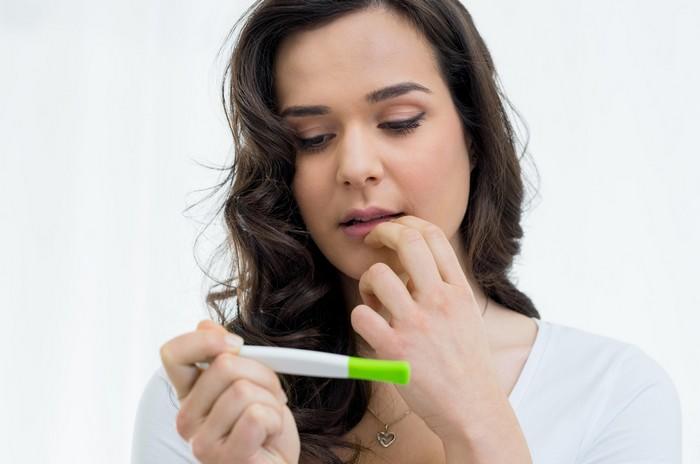In the realm of women’s health, fertility is a topic of profound significance. It holds the key to the dreams of motherhood for countless women, while also being intertwined with overall well-being and family planning. Understanding one’s fertility status has become increasingly crucial in today’s society, where lifestyle choices, career pursuits, and personal circumstances often influence the timing of starting a family. Female fertility tests serve as invaluable tools that unlock the secrets of the reproductive system, providing insights into its functionality and potential issues. These tests not only assist women who are facing challenges in conceiving but also offer a proactive approach for those planning ahead. By delving into the various tests available, we can better appreciate how they work together to paint a comprehensive picture of female fertility.
Hormonal Tests: Unraveling the Chemical Messengers of Reproduction
Hormones are the conductors of the fertility symphony, orchestrating processes like ovulation, implantation, and pregnancy maintenance.
Follicle-Stimulating Hormone (FSH) Test
FSH is secreted by the pituitary gland and plays a pivotal role in the growth and development of ovarian follicles. In a typical menstrual cycle, FSH levels are measured on day 3. In fertile women, the levels usually fall within the range of 4 – 10 mIU/mL. When FSH levels start to rise above this normal range, it could suggest that the ovaries are working harder to stimulate follicle growth, which might be an indication of diminished ovarian reserve. For example, a woman in her late 30s or early 40s, nearing the natural decline in fertility, might notice her FSH levels creeping up, signaling that the ovaries have fewer eggs remaining or that the quality of those eggs is decreasing.
Luteinizing Hormone (LH) Test
LH also originates from the pituitary gland and has a critical function in triggering ovulation. A surge in LH levels, which can be detected through blood or urine tests, usually occurs around the middle of the menstrual cycle, prompting the release of a mature egg from the ovary. An abnormal LH pattern, such as consistently elevated or flattened levels, can be a sign of hormonal imbalances. In cases of polycystic ovary syndrome (PCOS), women often exhibit an elevated LH to FSH ratio, disrupting the normal ovulatory process and potentially leading to irregular periods and difficulties in conceiving.
Progesterone Test
Progesterone is a hormone produced by the corpus luteum, the structure that forms in the ovary after ovulation. Measuring progesterone levels, typically around day 21 in a 28-day cycle, helps determine if ovulation has occurred successfully. Adequate progesterone levels are essential for preparing the uterine lining for the implantation of a fertilized egg. If progesterone levels are low, it could imply that ovulation was not complete or that the corpus luteum is not functioning properly, increasing the risk of early pregnancy loss even if fertilization does take place.
Ovarian Reserve Testing: Gauging the Reproductive Bank
The concept of ovarian reserve is akin to a savings account of eggs, with the quantity and quality of these eggs dictating a woman’s fertility potential.
Antimüllerian Hormone (AMH) Test
AMH is produced by the cells in the ovarian follicles and provides a snapshot of the remaining egg supply at any given time, regardless of the stage of the menstrual cycle. Younger women with healthy ovaries tend to have higher AMH levels, while a decline in AMH as a woman ages reflects the natural depletion of eggs. For instance, a woman in her 20s might have an AMH level of around 4 – 6 ng/mL, but by her mid- to late 30s, this could drop to 1 – 2 ng/mL. Low AMH levels can alert both women and healthcare providers to potential fertility challenges down the line, prompting discussions about family planning options or fertility preservation strategies like egg freezing.
Antral Follicle Count (AFC) via Ultrasound
During an ultrasound examination, specifically a transvaginal ultrasound in the early follicular phase of the menstrual cycle, technicians count the small antral follicles in the ovaries. These follicles are the precursors to the eggs that will potentially be ovulated in a given cycle. A normal AFC for a fertile woman in her reproductive prime might be around 10 – 20 follicles in total (counting both ovaries). A lower count could suggest a reduced ovarian reserve and, consequently, a decreased likelihood of successful ovulation and conception in each cycle.
Tubal Patency Tests: Ensuring the Passageways are Clear
The fallopian tubes act as the vital corridors through which sperm must travel to meet the egg and for the fertilized embryo to journey to the uterus.
Hysterosalpingogram (HSG)
In an HSG, a contrast dye is carefully injected into the uterus through the cervix, and then X-ray images are taken to visualize the flow of the dye as it travels through the fallopian tubes. This procedure can detect any blockages, strictures, or adhesions in the tubes that could prevent sperm from reaching the egg or impede the passage of a fertilized embryo. For example, a woman who had a previous pelvic infection, which can cause scarring in the tubes, might undergo an HSG to check if her tubes are still patent. The test is relatively quick, usually taking about 30 minutes to an hour, and provides clear visual evidence of the tubal condition.
Laparoscopy
Laparoscopy is a more invasive but highly detailed approach to assessing tubal patency. Under general anesthesia, a small camera called a laparoscope is inserted through a tiny incision in the abdomen. This allows the surgeon to directly observe the fallopian tubes, ovaries, and other pelvic organs. In addition to checking for blockages, laparoscopy can also identify and treat certain conditions like mild endometriosis, which can affect tubal function and fertility. However, due to the need for anesthesia and the surgical setting, it carries more risks and a longer recovery period compared to the HSG, but offers a more comprehensive evaluation of the pelvic cavity.
Ultrasound Examinations: Peering into the Reproductive Organs
Ultrasound technology provides a non-invasive window into the structure and function of the uterus and ovaries.
Transvaginal Ultrasound
This type of ultrasound involves inserting a small probe into the vagina, which emits sound waves that bounce back to create images of the pelvic organs. It’s particularly useful for evaluating the uterus for any structural abnormalities such as fibroids (benign growths in the uterine wall), polyps (growths protruding from the uterine lining), or congenital anomalies that could interfere with implantation or pregnancy. The ovaries can also be closely monitored to track follicle development during the menstrual cycle, helping to determine if ovulation is occurring regularly and if the follicles are growing to the appropriate size. For example, a woman experiencing infertility might have serial transvaginal ultrasounds over several cycles to map out her ovarian function and identify any potential issues with follicle maturation.
Abdominal Ultrasound
While not as detailed as the transvaginal approach for evaluating the internal reproductive structures, the abdominal ultrasound can still provide a broader view of the pelvis. It’s often used in cases where there are concerns about the overall pelvic anatomy, such as the position of the uterus or the presence of larger masses outside the immediate vicinity of the uterus and ovaries. It’s a more comfortable option for some women who may be uncomfortable with the transvaginal procedure, although it may require a full bladder to get clearer images, which can be inconvenient for some patients.
Genetic Testing: Uncovering Hidden Genetic Factors
Genetic components can significantly impact fertility and the likelihood of a healthy pregnancy.
Karyotyping
Karyotyping examines the number and structure of chromosomes in a woman’s cells. Chromosomal abnormalities, such as translocations (where parts of chromosomes break off and reattach to other chromosomes) or aneuploidies (an abnormal number of chromosomes, like in Down syndrome), can lead to infertility, recurrent miscarriages, or the birth of a child with genetic disorders. By analyzing the karyotype, healthcare providers can identify these potential genetic roadblocks to conception and guide patients on appropriate family planning options, such as considering in vitro fertilization with preimplantation genetic testing if the risk of chromosomal issues is high.
Carrier Screening
Carrier screening tests are designed to detect if a woman (and her partner) is a carrier for specific genetic diseases. Common examples include cystic fibrosis, sickle cell anemia, and Tay-Sachs disease. Even if a woman shows no symptoms of the disease herself, being a carrier means there’s a risk of passing on the affected genes to her offspring. If both partners are carriers of the same genetic disorder, the chances of having a child with the disease increase significantly. These tests allow couples to make informed decisions about their reproductive choices, such as opting for prenatal testing during pregnancy or exploring other family planning alternatives if the risk is deemed too high.
Endometrial Biopsy: Assessing the Uterine Lining
The endometrium, the lining of the uterus, needs to be in prime condition for a fertilized egg to implant and grow.
An endometrial biopsy involves taking a small sample of the endometrial tissue, usually during the luteal phase of the menstrual cycle. The sample is then examined under a microscope to assess its quality and hormonal responsiveness. For example, if the endometrium is too thin or lacks the appropriate hormonal receptors, it may not be receptive to a fertilized egg, leading to implantation failure. This test can also detect any abnormal cell growth or inflammation in the uterine lining, which could potentially affect fertility or signal underlying health issues like endometrial hyperplasia or early-stage endometrial cancer, prompting further investigation and treatment.
Conclusion
The array of tests for female fertility is a comprehensive toolkit that, when used in tandem, can provide a detailed understanding of a woman’s reproductive health. From hormonal assays that track the delicate chemical signals of the menstrual cycle to genetic investigations that uncover hidden chromosomal risks, each test has its unique role. Whether a woman is on the cusp of starting a family, has been struggling to conceive, or simply wants to be proactive about her fertility, these tests offer invaluable insights. By working closely with healthcare providers and understanding the significance of each test, women can take control of their fertility journey, making informed decisions that optimize their chances of achieving a healthy pregnancy and fulfilling their dreams of motherhood. Understanding the tests is the first step in this empowering process, ensuring that women are well-equipped to navigate the complex landscape of female fertility.
Related topics:


























